June 10, 1946: Jack Johnson died in a car crash on U.S. Highway 1 near Franklinton, North Carolina, a small town near Raleigh, after racing angrily from a diner that refused to serve him. He was taken to the closest black hospital, Saint Agnes Hospital in Raleigh. He was 68 years old at the time of his death.
He was buried next to Etta Duryea Johnson at Graceland Cemetery in Chicago. His grave was initially unmarked, but a stone that bears only the name “Johnson” now stands above the plots of Jack, Etta, and Irene Pineau.
John Arthur (“Jack”) Johnson , nicknamed the Galveston Giant, was a boxer. At the height of the Jim Crow era, Johnson became the 1st African American world heavyweight boxing champion (1908–1915).
In a documentary about his life, Ken Burns notes that “for more than thirteen years, Jack Johnson was the most famous and the most notorious African-American on Earth.”
While incarcerated, Johnson found need for a tool that would help tighten loosened fastening devices, and modified a wrench for the task. He patented his improvements on April 18, 1922, as US Patent 1,413,121.
THE “FIGHT OF THE CENTURY”:
In 1910, former undefeated heavyweight champion James J. Jeffries came out of retirement to challenge Johnson. He had not fought in six years and had to lose well over 100 pounds to get back to his championship fighting weight. Initially Jeffries had no interest in the fight, being quite happy as an alfalfa farmer. But those who wanted to see Johnson defeated badgered Jeffries mercilessly for months, and offered him an unheard sum of money, reputed to be about $120,000 to which he finally acquiesced.
Jeffries remained mostly hidden from media attention until the day of the fight, meanwhile Johnson was soaking up the spotlight. John L. Sullivan who made boxing championships a popular and esteemed spectacle stated that Johnson was in such good physical shape compared to Jeffries that he could only lose if he had a lack of skill on the day. Before the fight, Jeffries remarked, “It is my intention to go right after my opponent and knock him out as soon as possible.” While his wife added, “I’m not interested in prizefighting but I am interested in my husband’s welfare, I do hope this will be his last fight.” Johnson’s words were “May the best man win.”
Racial tension was brewing leading up to the fight and to prevent any harm to either boxer, guns were prohibited within the arena as was the sale of alcohol or anyone under the effects of alcohol. Behind the racial attitudes being instigated by the media was a major investment in gambling for the fight with 10-7 odds in favor of Jeffries.
The fight took place on July 4, 1910 in front of 20,000 people, at a ring built just for the occasion in downtown Reno, Nevada. Jeffries proved unable to impose his will on the younger champion and Johnson dominated the fight. By the 15th round, after Jeffries had been knocked down twice for the first time in his career, Jeffries corner threw in the towel to end the fight and prevent Jeffries from having a knock out on his record. Johnson later remarked he knew the fight was over in the 4th round when he landed an uppercut and saw the look on Jeffries face, stating “I knew what that look meant. The old ship was sinking.”
The “Fight of the Century” earned Johnson $65,000 (over $1.5 million in 2012 dollars) and silenced the critics, who had belittled Johnson’s previous victory over Tommy Burns as “empty,” claiming that Burns was a false champion since Jeffries had retired undefeated. John L. Sullivan commented after the fight that never had there been a championship contest that was so one-sided and that Johnson “played fairly at all times and fought fairly”.
AFTERMATH & RACE RIOTS:
The outcome of the fight triggered race riots that evening—the Fourth of July—all across the United States, from Texas and Colorado to New York and Washington, D.C. Johnson’s victory over Jeffries had dashed white dreams of finding a “great white hope” to defeat him. Many whites felt humiliated by the defeat of Jeffries. Blacks, on the other hand, were jubilant, and celebrated Johnson’s great victory as a victory for racial advancement. Black poet William Waring Cuney later highlighted the black reaction to the fight in his poem “My Lord, What a Morning.” Around the country, blacks held spontaneous parades and gathered in prayer meetings.
Some riots were simply blacks celebrating in the streets. In certain cities, like Chicago, the police did not disturb the celebrations. But in other cities, the police and angry white citizens tried to subdue the revelers. In all, riots occurred in more than 25 states and 50 cities. About 8 blacks and 5 whites died in the riots, and hundreds more were injured.
PRISON SENTENCE:
Johnson constantly flouted conventions regarding the social and economic “place” of blacks in American society. As a black man, he broke a powerful taboo in consorting with white women, and would constantly and arrogantly verbally taunt men (both white and black) inside and outside the ring. Johnson was pompous about his affection for white women.
On October 18, 1912, Johnson was arrested on the grounds that his relationship with Lucille Cameron violated the Mann Actagainst “transporting women across state lines for immoral purposes” due to her being an alleged prostitute and due to Johnson being black. Cameron, soon to become his second wife, refused to cooperate and the case fell apart.
Less than a month later, Johnson was arrested again on similar charges. This time, the woman, another alleged prostitute named Belle Schreiber, with whom he had been involved in 1909 and 1910, testified against him. In the courtroom of Kenesaw Mountain Landis, the future Commissioner of Baseball who perpetuated the baseball color line until his death, Johnson was convicted by an all-white jury in June 1913, despite the fact that the incidents used to convict him took place prior to passage of the Mann Act.He was sentenced to a year and a day in prison.
Johnson skipped bail and left the country, joining Lucille in Montreal on June 25, before fleeing to France. For the next 7 years, they lived in exile in Europe, South America and Mexico. Johnson returned to the U.S. on July 20, 1920. He surrendered to Federal agents at the Mexican border and was sent to the United States Penitentiary, Leavenworth to serve his sentence September 1920 as Inmate #1546. He was released on July 9, 1921.
There have been recurring proposals to grant Johnson a posthumous presidential pardon. A bill requesting President George W. Bush to pardon Johnson in 2008, passed the House,but failed to pass in the Senate.
In April 2009, Senator John McCain, along with Representative Peter King, filmmaker Ken Burns and Johnson’s great-niece, Linda Haywood, requested a presidential pardon for Johnson from President Barack Obama. On July 29, 2009, Congress passed a resolution calling on President Obama to issue a pardon.
LEGACY:
?Johnson was inducted into the Boxing Hall of Fame in 1954, and is on the roster of both the International Boxing Hall of Fame and the World Boxing Hall of Fame.
?In 2005, the United StatesNational Film Preservation Board deemed the film of the 1910 Johnson-Jeffries fight “historically significant” and put it in the National Film Registry.
?Johnson’s skill as a fighter and the money that it brought made it impossible for him to be ignored by the establishment. In the short term, the boxing world reacted against Johnson’s legacy. But Johnson foreshadowed one of the most famous boxers of all time, Muhammad Ali. In fact, Ali often spoke of how he was influenced by Jack Johnson. Ali identified with Johnson because he felt America ostracized him in the same manner because of his opposition to the Vietnam War and affiliation with the Nation of Islam.
?In 2002, scholar Molefi Kete Asante listed Jack Johnson on his list of 100 Greatest African Americans.
?In 2012, the City of Galveston dedicated a park in Johnson’s memory as Galveston Island’s most famous native son. The park includes a life-size, bronze statue of Johnson.
POP CULTURE:
■Johnson’s story is the basis of the play and subsequent 1970 movie The Great White Hope, starring James Earl Jones as Johnson (known as Jack Jefferson in the movie), and Jane Alexander as his love interest.
■In 2005, filmmaker Ken Burns produced a 2-part documentary about Johnson’s life, Unforgivable Blackness: The Rise and Fall of Jack Johnson,based on the 2004 nonfiction book of the same name by Geoffrey C. Ward. The book would go on to win theWilliam Hill Sports Book of the Year (2006).
■Folksinger and blues musician Lead Belly references Johnson in a song about the Titanic:
“Jack Johnson wanna get on board, Captain said I ain’t hauling no coal. Fare thee, Titanic, fare thee well. When Jack Johnson heard that mighty shock, mighta seen the man do the Eagle rock. Fare thee, Titanic, fare thee well” (The Eagle Rock was a popular dance at the time).
■In 1969, American folk singer Jamie Brockett reworked the Lead Belly song into a satirical talking blues called “The Legend of the U.S.S. Titanic.” It should be noted there is no convincing evidence that Johnson was in fact refused passage on the Titanic because of his race, as these songs allege.
■Miles Davis’s 1971 album entitled A Tribute to Jack Johnson was inspired by Johnson. The end of the record features the actor Brock Peters (as Johnson) saying:
“I’m Jack Johnson. Heavyweight champion of the world. I’m black. They never let me forget it. I’m black all right! I’ll never let them forget it!”
■Miles Davis and Wynton Marsalis both have done soundtracks for documentaries about Johnson.
■Several hip-hop activists have also reflected on Johnson’s legacy, most notably in the album The New Danger, by Mos Def, in which songs like “Zimzallabim” and “Blue Black Jack” are devoted to the artist’s pugilistic hero.
■Additionally, both Southern punk rock band This Bike Is A Pipe Bomb and alternative country performer Tom Russell have songs dedicated to Johnson. Russell’s piece is both a tribute and a biting indictment of the racism Johnson faced:”here comes Jack Johnson, like he owns the town, there’s a lot of white Americans like to see a man go down… like to see a black man drown.”
■Atlanta based “flower punk” rock band the Black Lips recorded a song on their 2009 album 200 Million Thousand called “Big Black Baby Jesus of Today” which features the lyric “You can’t be the Jack Johnson of Today/Big Black Baby Jesus on the way.”
■Johnson was referenced in the film Anchorman: The Legend of Ron Burgundy and he is mentioned in the 1940 book Native Sonby author Richard Wright. Furthermore, 41st street in Galveston is named Jack Johnson Blvd.
■Wal-Mart created a controversy in 2006 when DVD shoppers were directed from Charlie and the Chocolate Factory and Planet of the Apes to the “similar item” Unforgivable Blackness: The Rise and Fall of Jack Johnson.
■Ray Emery of the Chicago Blackhawks of the NHL sported a mask with a picture of Johnson on it as a tribute to his love for boxing.
■In the trenches of World War One, Johnson’s name was used by British troops to describe the impact of German 150 mm heavy artillery shells which had a black colour. In his letters home to his wife, Rupert Edward Inglis (1863–1916), who was a former rugby international and now a Forces Chaplain, describes passing through the town of Albert:
“We went through the place today (2 October 1915) where the Virgin Statue at the top of the Church was hit by a shell in January. The statue was knocked over, but has never fallen, I sent you a picture of it. It really is a wonderful sight. It is incomprehensible how it can have stayed there, but I think it is now lower than when the photograph was taken, and no doubt will come down with the next gale. The Church and village are wrecked, there’s a huge hole made by a Jack Johnson just outside the west door of the Church.”
■Jack Johnson was painted several times by Raymond Saunders.
■In Joe R. Lansdale’s short story The Big Blow, Johnson is featured fighting a white boxer brought in by Galveston, Texas’s boxing fans to defeat the African American fighter during the1900 Galveston Hurricane. The story won a Bram Stoker Awardand was expanded into a novel.
■Johnson is the subject of the biographical comic book The Original Johnson, by writer/artist Trevor Von Eeden.
■In 2011, Jack Johnson was featured on EA Sports Fight Night Champion as downloadable content on Xbox 360 and PlayStation 3. Johnson was part of the “Legends Pack” with Jack Dempsey, Floyd Patterson, Joe Louis, and Rocky Marciano.
■Johnson is a major character in the novel The Killings of Stanley Ketchel (2005), by James Carlos Blake.
■In the opening scene of Episode 6, Series 2 (2011), of the British drama Downton Abbey, Mary Crawley, pushing her wheel chair bound cousin Matthew Crawley across the lawn in the Summer of 1918 says, “I shall have arms like Jack Johnson if I’m not careful.”
Finish Reading The Originally Post on
Daily Black History Facts





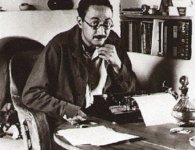
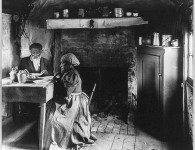
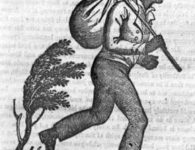
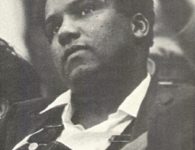
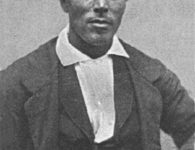



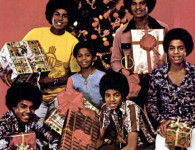
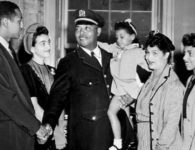



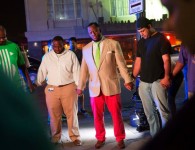

23 Comments
Great wonderful man did a lot for the Black Civil Rights movement thank you Jack Johnson may you R.I.P
It’s really owsem,
[…] from ringside. Johnson crashed his Ford into a light pole near Raleigh, North Carolina – after apparently leaving a diner that refused to serve him because of his race – and was pronounced dead at […]
The references to follow the article are wonderful! Thank you!
Wonderful article. Thanks.
Jack, was the man.
A Great American of African American History.Jack Johnson stood up racial equality of the World. God Bless you always Jack Johnson
[…] him from ringside. Johnson crashed his Ford into a light spar near Raleigh, North Carolina- after apparently leaving a dinerthat refused to serve him because of his hasten- and was enunciated dead at […]
[…] him from ringside. Johnson crashed his Ford into a light pole near Raleigh, North Carolina- after apparently leaving a dinerthat refused to serve him because of his race- and was pronounced dead at […]
[…] him from ringside. Johnson crashed his Ford into a light pole near Raleigh, North Carolina- after apparently leaving a dinerthat refused to serve him because of his race- and was pronounced dead at […]
Great story; great history. Important chapter in Boxing but, his times were so hard against him you realize what a giant he was. Notice: though the man was on RUN seven years..when he did see jail time, Feds kept him considerably less than the year-&-Day.
So awful he died in Car accident. And he predicted same. Why? Why wouldn’t he of drove more careful if he knows his proble
Well, I read often about him.
Good post. Thanks.
Thanks for any other informative web site. Where else may just I am getting that type
of info written in such a perfect method?
I’ve a venture that I’m simply now operating on, and I have been at the look out for such info.
It is the best time to make some plans for the future and it
is time to be happy. I have read this post and
if I could I want to suggest you some interesting
things or advice. Perhaps you could write next articles referring to this article.
I desire to read even more things about it!
Nexium Discount Prices Amoxicillin Safe For Pregnancy Buying Cialis In Israel Kamagra Prezzo Oral Jelly
hello there and thank you for your info – I have definitely picked
up anything new from right here. I did however expertise several technical points
using this site, since I experienced to reload the web
site lots of times previous to I could get it to load properly.
I had been wondering if your hosting is OK? Not that I am
complaining, but sluggish loading instances times will sometimes affect your placement
in google and could damage your high quality score if advertising and marketing with Adwords.
Anyway I’m adding this RSS to my email and could look out
for a lot more of your respective exciting content.
Make sure you update this again very soon.
For the reason that the admin of this web site is working,
no doubt very rapidly it will be well-known, due to its feature contents.
Wow, this article is nice, my sister is analyzing
these things, therefore I am going to convey her.
What’s Happening i am new to this, I stumbled upon this
I have discovered It positively helpful and it has helped me out loads.
I hope to give a contribution & help other users like its helped me.
Good job.
This piece of writing will help the internet visitors
for building up new website or even a blog from start to end.
Generic Viagra Louisville Ky [url=http://try-rx.com]cialis vs viagra[/url] Want to buy isotretinoin us free shipping Where Can I Purchase Viagra Online Peter Lenz Viagra
[…] Johnson disintegrated his Ford into a light-headed pole near Raleigh, North Carolina- after apparently leaving a dinerthat refused to serve him because of his hasten- and was pronounced dead at […]
Johnson was a great fighter for back then, but the way he fought woulda gotten him ejected nowadays. If you watch him while he’s up close, you can see that he holds his opponent while hitting him. And he lands a lot of hits while either in the clinch, or breaking from it. That is not fair play, when, as i’ve noticed…all his opponents will start out breaking cleanly, doing so time and time again. Basically placing themselves at a disadvantage because they suffer damage from the breaks, and yet give none in return because they were trusting in Johnson’s sense of fair play. After a while of course they would start htting on the break cause they realized Jack was going to keep on doing it. The way he fought back then probably would’ve caused a real fight to break out nowadays…lol.